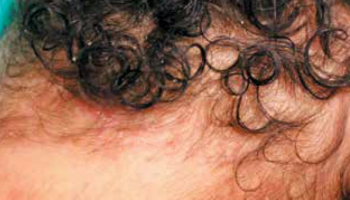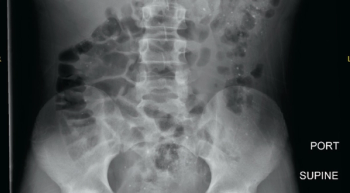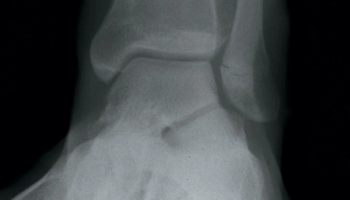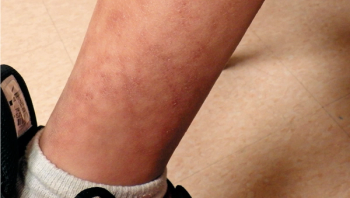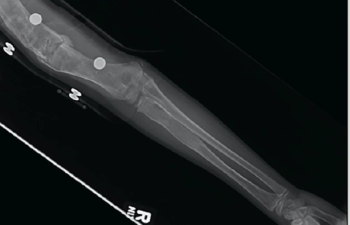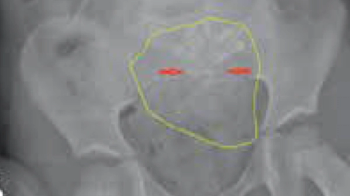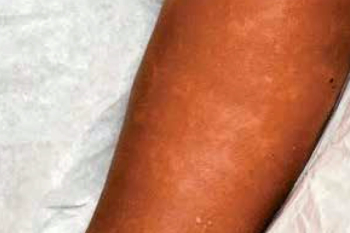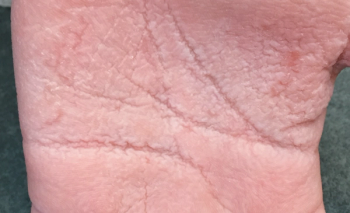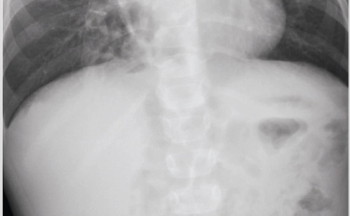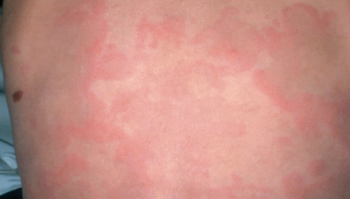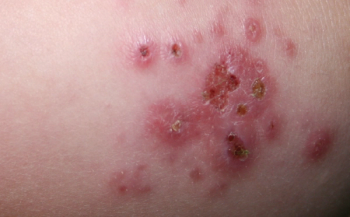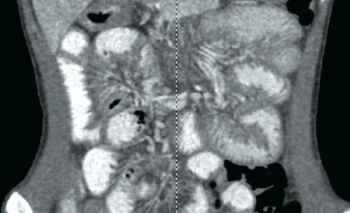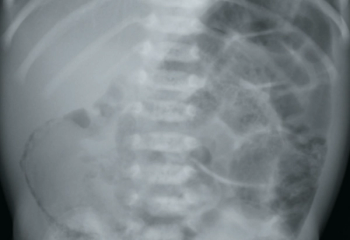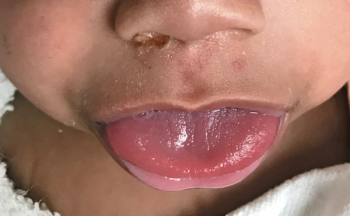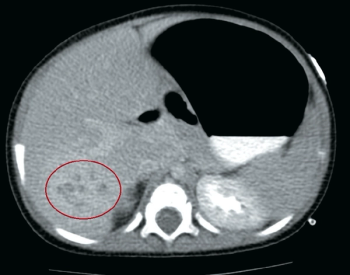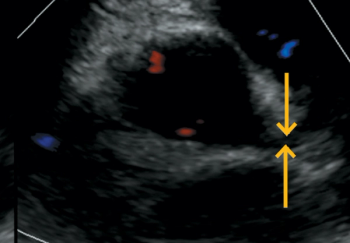
A 3-year old male presents with 3 days of fever (maximal temperature, 105°F), diffuse abdominal pain, and several episodes of nonbilious, nonbloody emesis and loose nonbilious, nonmucousy stools. On day 3 of illness, he was seen at an urgent care clinic where he was diagnosed with acute otitis media and prescribed amoxicillin and ondansetron. He could not tolerate any oral intake and developed red eyes, abdominal pain, and redness of his hands and feet. Later that same night, he presented to the pediatric emergency department and was admitted to the pediatric ward for management of his fever, abdominal pain, and dehydration.

